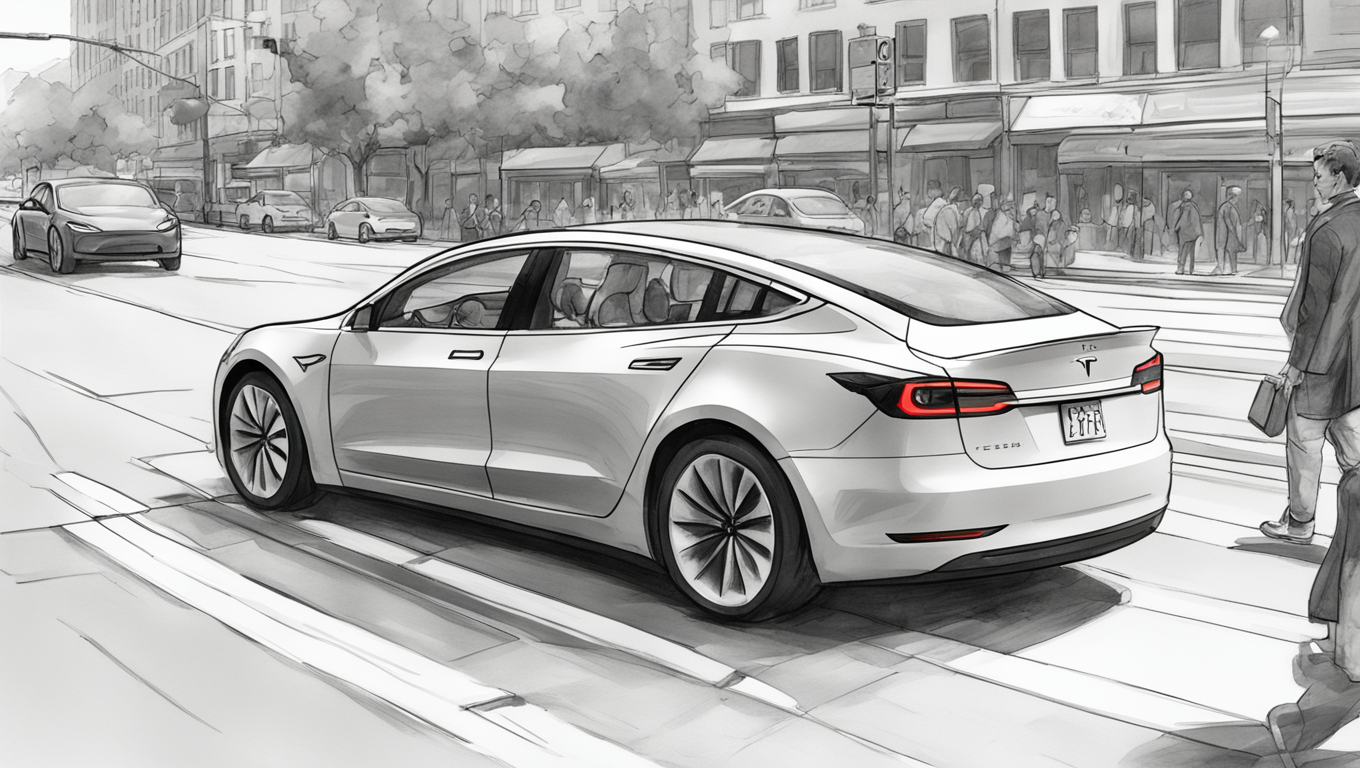On this day, December 16, 2023, Tesla has issued a recall for 2 million vehicles in the United States due to concerns surrounding the safety of its autopilot function. This move comes shortly after a former whistleblower from Tesla expressed doubts about the reliability of the autopilot feature. As we delve into the intricate world of autonomous driving technology, the question arises: are vehicles equipped with this technology truly ready to navigate the complexities of the real world?
A quick internet search uncovers several reported incidents where Tesla cars have made errors in identifying objects on the road. For instance, a Tesla vehicle mistook an image of a stop sign on a billboard for a real stop sign and even confused a yellow moon with a yellow traffic light. Additionally, there have been numerous recent examples of issues with “robotaxis” operating in San Francisco. These incidents raise concerns about the readiness of the technology that powers autonomous vehicles.
At the core of self-driving vehicles lies artificial intelligence (AI), which currently lacks the human-like understanding and reasoning necessary for effective decision-making while driving. AI algorithms need advanced contextual reasoning to interpret complex visual cues, such as obscured objects, and to infer unseen elements in the environment. Furthermore, these algorithms must be capable of counterfactual reasoning – assessing hypothetical scenarios and predicting potential outcomes. This skill is essential for making informed decisions in dynamic driving situations.
Consider a scenario where an autonomous vehicle approaches a busy intersection with traffic lights. In addition to obeying the current traffic signals, it must also anticipate the actions of other road users and account for how those actions might change under different circumstances. In 2017, an Uber robotaxi in Arizona drove through a yellow light and collided with another car, sparking questions about whether a human driver would have approached the situation differently. These incidents highlight the importance of social interaction – an area where humans excel and robots often struggle. Negotiating the right of way on urban roads and safely navigating roundabouts both require social skills that are currently missing from AI-driven vehicles.
To seamlessly integrate AI-driven cars into our existing traffic system, groundbreaking algorithms that can mimic human-like thinking, social interaction, adaptation to new situations, and learning through experience need to be developed urgently. These algorithms would enable AI systems to understand nuanced human driver behavior, react to unforeseen road conditions, prioritize decision making that considers human values, and interact socially with other road users.
As we introduce AI-driven vehicles into our roads, the current standards used to assess the success of autonomous driving systems will soon become insufficient. Consequently, there is a pressing need for new protocols that provide more rigorous testing and validation methods to ensure the highest standards of safety, performance, and interoperability. These new standards would establish a foundation for a safer and more harmonious traffic environment, where driverless and human-driven cars can coexist.
While it is important to acknowledge the need for further developments in autonomous driving technology, it would be a mistake to completely disregard the potential of fully self-driving cars. Although they may not become as ubiquitous as the rapid spread of Tesla vehicles suggests, there is still a place for them. Initially, they may be best suited for specific uses such as autonomous shuttles and highway driving. Alternatively, they could operate in special environments with dedicated infrastructure, such as autonomous buses on predefined routes or autonomous trucks utilizing separate lanes on motorways. However, it is crucial that these applications focus on benefiting the entire community rather than just a privileged few.
To ensure the successful integration of autonomous vehicles on our roads, a diverse group of experts must come together in a collaborative effort. This group should include car manufacturers, policymakers, computer scientists, human and social behavior scientists, engineers, and governmental bodies, among others. By collectively addressing the current challenges, they can create a robust framework that accounts for the complexity and variability of real-world driving scenarios. This collaboration should aim to develop industry-wide safety protocols and standards, shaped by input from all stakeholders, and ensure that these standards can adapt as technology advances. Additionally, open channels for sharing data and insights from real-world testing and simulations must be established to foster public trust through transparency and demonstrate the reliability and safety of AI systems in autonomous vehicles.
In conclusion, as Tesla recalls 2 million vehicles and concerns arise over the safety and readiness of autonomous driving technology, it is evident that further advancements are necessary. The integration of AI-driven vehicles into our society requires the development of groundbreaking algorithms capable of human-like thinking, social interaction, adaptation, and learning. New standards and protocols are needed to ensure the highest levels of safety, performance, and interoperability. By fostering collaboration among experts from various fields and embracing transparency, we can create a traffic environment where autonomous and human-driven vehicles coexist harmoniously, ultimately benefiting the entire community.





Use the share button below if you liked it.